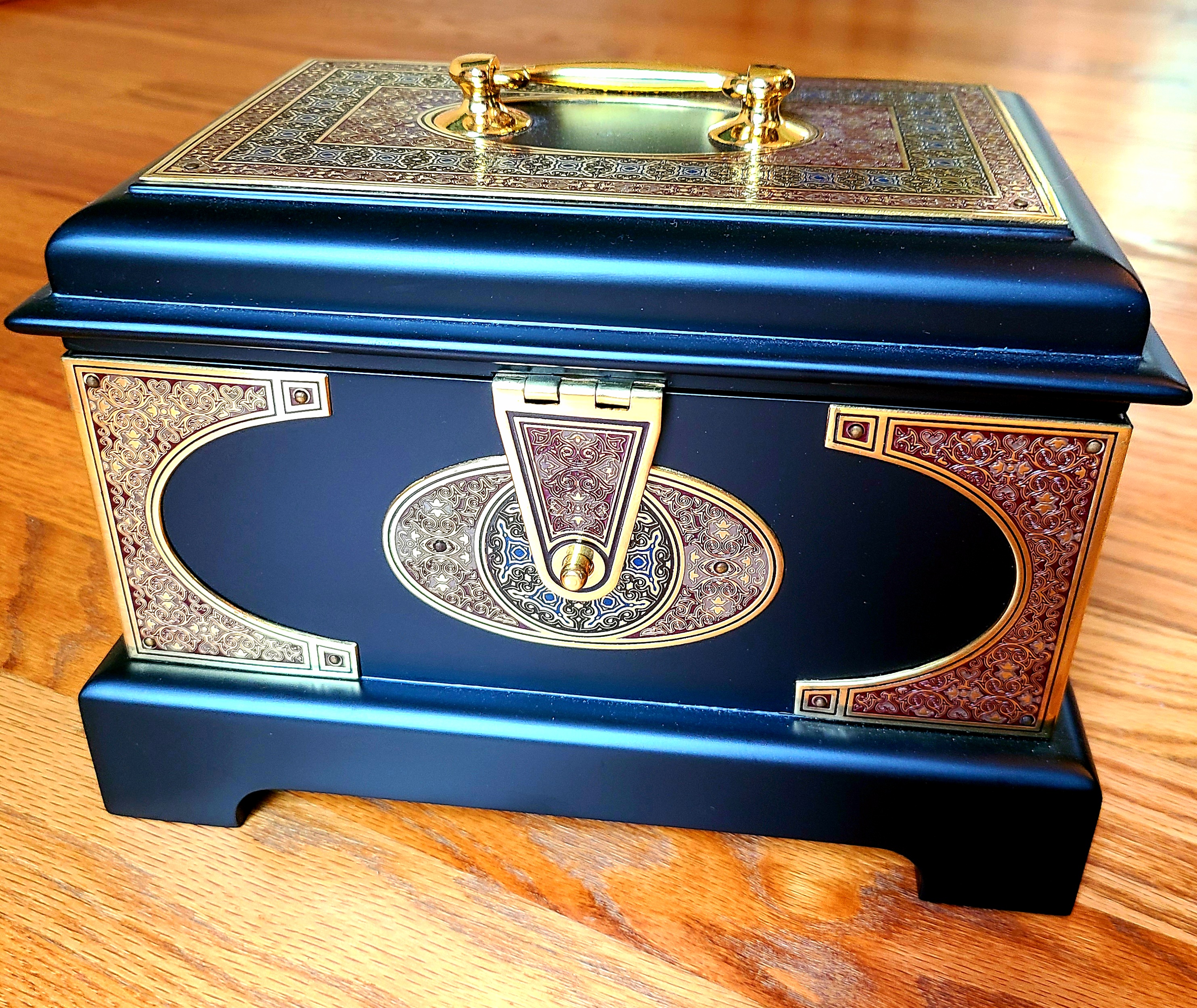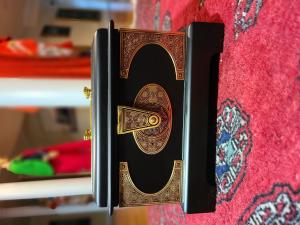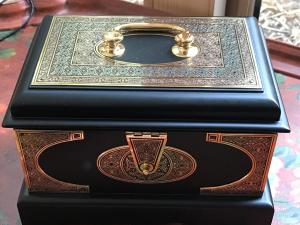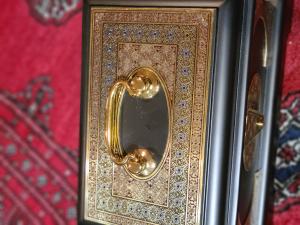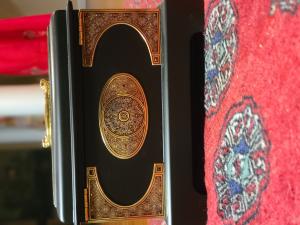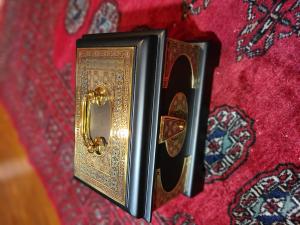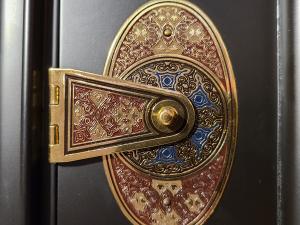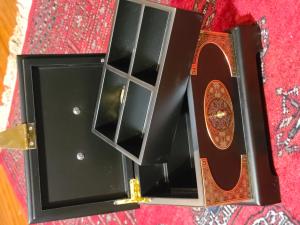Rectangular Bandung lacquer box adorned with enameled Arabesque Islamic ornaments from Java
Unknown
Box / Container
A rectangular lacquer box carved from wood, adorned with engraved Arabesque Islamic enameled metal elements from the mixture of copper and brass, with Islamic ornaments painted in red, blue, and black colors. The box comes with an insert with four compartments, latch and a handle on top.
This box was made and purchased in Bandung Java, which is a heavily Muslim part of Indonesia, hence the more Islamic design.
This box was made and purchased in Bandung Java, which is a heavily Muslim part of Indonesia, hence the more Islamic design.
This box was created in Bandung, the capital of West Java province in Indonesia. In the Dutch East Indies Bandung was at the height of its golden age and acquired the moniker "Parijs van Java", which means "Paris of Java", thanks to its reputation as a fashionable retreat for the wealthy. During this period Art Deco significantly influenced decorative arts and architecture of the city and their further development. Geometric sharp ornaments and shapes are one of the key characteristics of Art Deco. Even though the box is adorned with Islamic ornaments as the main religion in Bandung and in Java overall is Islam, it has strongly-marked features of Art Deco boxes.
The use of geometrical patterns is one of the most significant characteristics of Islamic art. Muslims used and developed geometrical art due to two main reasons. The first one corresponds to the popularity of abstract forms, which provided an alternative for the use of prohibited forms of live creatures. This was favored, particularly in mosques, as abstract geometrical forms induce the spirit contemplation in contrast to living forms, which divert it to the material world. The second factor behind the expansion of this type of art was connected to the development and popularity of the science of geometry in the Muslim world at that time.
The use of aesthetic geometry (Arabesque) is very much connected to the famous concept of Arabesque which is defined as ornamental work used for flat surfaces consisting of interlacing geometrical patterns of polygons, circles, and interlocked lines and curves. The Arabesque design is built up on a system of articulation and orbiculation and is ultimately capable of reduction to one of the nine simple polygonal elements. The pattern may be built up of rectilinear lines, curvilinear lines or both combined together, producing a cusped or foliated effect.
The use of geometrical patterns is one of the most significant characteristics of Islamic art. Muslims used and developed geometrical art due to two main reasons. The first one corresponds to the popularity of abstract forms, which provided an alternative for the use of prohibited forms of live creatures. This was favored, particularly in mosques, as abstract geometrical forms induce the spirit contemplation in contrast to living forms, which divert it to the material world. The second factor behind the expansion of this type of art was connected to the development and popularity of the science of geometry in the Muslim world at that time.
The use of aesthetic geometry (Arabesque) is very much connected to the famous concept of Arabesque which is defined as ornamental work used for flat surfaces consisting of interlacing geometrical patterns of polygons, circles, and interlocked lines and curves. The Arabesque design is built up on a system of articulation and orbiculation and is ultimately capable of reduction to one of the nine simple polygonal elements. The pattern may be built up of rectilinear lines, curvilinear lines or both combined together, producing a cusped or foliated effect.
Height: 5.5
Width: 9
Depth: 6
Bandung, West Java, Indonesia
Bandung, West Java, Indonesia
Wood, mixture of copper and brass, enamel
The box is carved from wood and then hand-finished with multiple layers of polishing and lacquer paint to achieve a fine, smooth sheen. When the paint is dry, metal decorative enameled ornaments from the mixture of copper and brass are attached to the box together with a handle and a latch.
Enameling of the ornaments is done by creation of metal cells and filling those cells with enamel which is in a ground, powdered form. The pieces are then placed into a furnace where the enamel is melted, or melted by using a hand-held torch.
